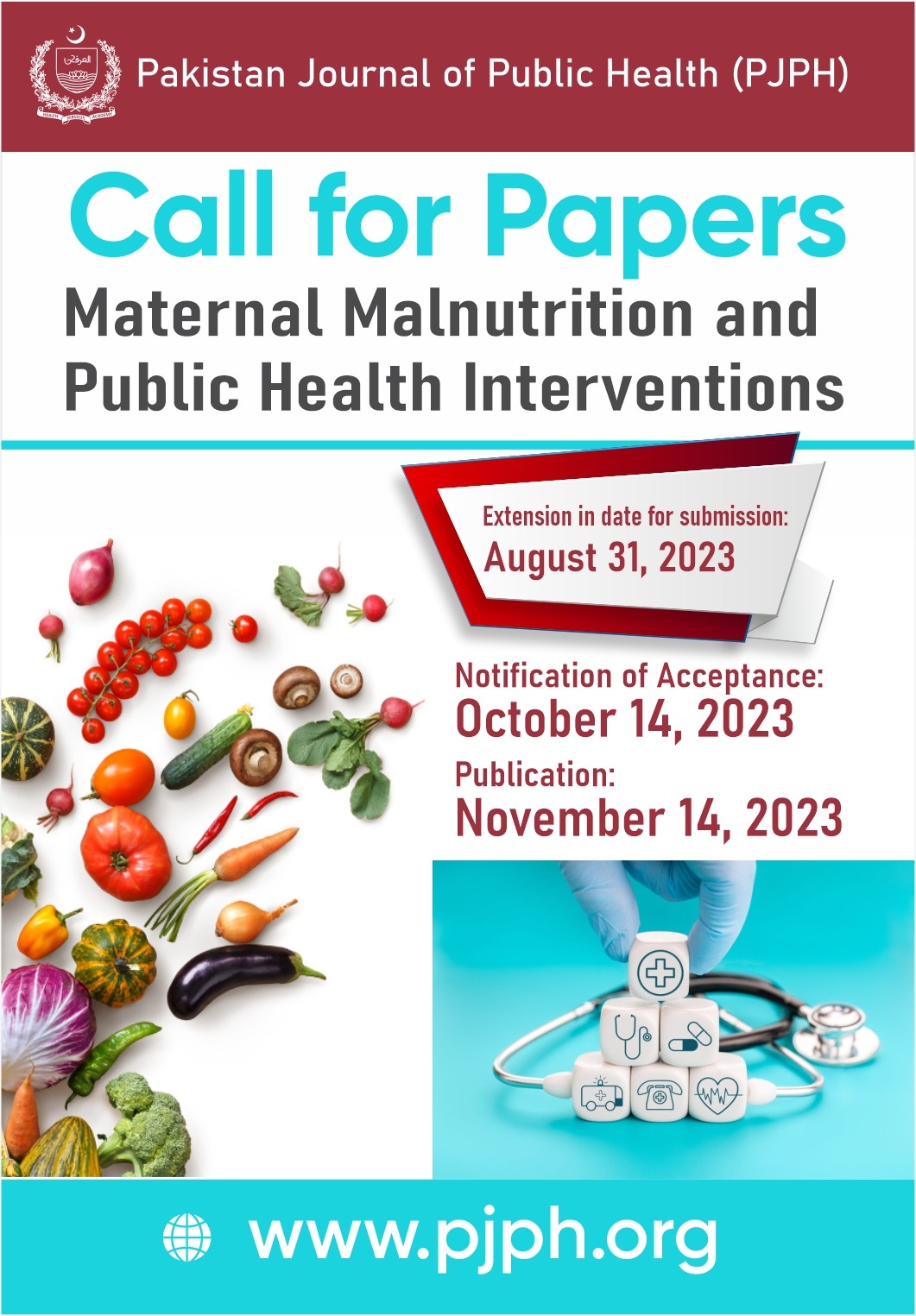Health Related Quality of Life in Systolic Heart Failure Patients at Tertiary Care Unit Cardiology OPD Hayatabad Medical Complex Peshawar Pakistan
DOI:
https://doi.org/10.32413/pjph.v10i3.501Keywords:
Heart failure, systolic heart failure, quality of life, Minnesota living with heart failure questionnaire, coronary artery disease, New York heart associationAbstract
Background: Heart failure is a leading cardiac morbidity prevalent across the globe. Its incidence is rising in direct proportion to increasing longevity all over the world. Demographic variables are important predictors of quality of life, morbidity, rehospitalization, and mortality due to systolic heart failure. The objective of our study was to assess the association of demographic variables with quality of life of systolic heart failure in patients presenting at Cardiology Out Patient Department, Hayatabad Medical Complex, Peshawar. Our study aims to inform policy making as it highlights some important demographics factors associated with quality of life.
Methods: A cross sectional method was employed in the study to examine systolic heart failure and its prevalence across various demographic variables such as age, gender, marital status, activity, number of children, education, employment status, and BMI at cardiology OPD of a medical teaching institution in Peshawar. Consecutive sampling was used and data were collected through a structured questionnaire from 368 Systolic Heart Failure patients. Data were analyzed using SPSS version 22.
Results: We had 368 participants, a majority of whom (n=290; 78.8%), were in NYHA class III. The rest (n=78; 21.2%) were in class IV. Minnesota Living with Heart Failure Questionnaire (MLHFQ) was used to categorize quality of life into ‘Good’, ‘Moderate’ and ‘Poor’. Most participants were in the ‘poor’ category with MLHFQ scores >45 (n=193; 52.4%). Those who had scores between 25 -45 were categorized as ‘moderate’ (n=116; 31.5%), and participants who scored < 24 were categorized as having a ‘good’ quality of life (n=59; 16%). Reliability of tools was checked by Cronbach alpha which was 0.86
Conclusion: It was concluded that demographic variables have a significant effect on the overall morbidity of heart failure patients and heart failure related quality of life.
Downloads
Published
Issue
Section
License
Copyright (c) 2021 Pakistan Journal of Public Health

This work is licensed under a Creative Commons Attribution-NonCommercial 4.0 International License.






